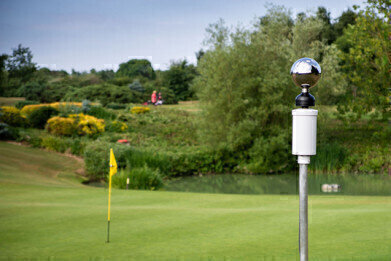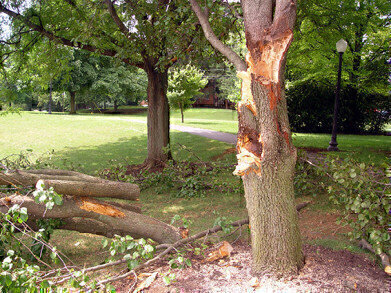Air Monitoring
Why you need a warning of lightning strikes
Jul 03 2019
Nathan Neil, Biral’s marketing director, recently discussed some of the fallacies surrounding lightning and why warning systems are a ‘must have’ for all outdoor leisure facilities
There are a few “old-wives-tales” regarding lightning and thunderstorms which need to be addressed in order to keep people as safe as possible. When engaging in outdoor activities, it’s vital that everyone knows the right and wrong ways to behave during a storm.
The first common misconception is that thunder sounds a long way off. A lightning bolt often exceeds 6 miles (10 km) in length and rarely comes vertically to earth. So if lightning occurs within this distance, the next flash may well be to where you are standing. You cannot usually hear the thunder if the lightning is over 6 miles away, so you often have no audible warning at all.
Next is the notion that ‘I haven’t seen any lightning yet, so we’ll be fine’. It is also a fact that nearby lightning occurring inside the thunder cloud during the day can be unseen, even by trained meteorological observers. Unfortunately, humans are rather poor thunderstorm detectors so should definitely not be relied upon for consistent, early warnings.
Most people also believe that if it hasn’t started to rain yet, the storm is not overhead - Whilst the highest concentration of flashes are often close to the areas of most intense hail or rainfall, lightning can strike the ground with or without rain falling at your location, so the risk is not reduced when it is (or is not) raining.
Finally the classic ‘Let’s shelter under that tree until the storm has passed’ - Most people killed or injured by lightning are not struck by lightning directly. Instead, many people struck outside are electrocuted by the very strong currents flowing in the ground close to the strike location, which travels through their body from one foot to another. Alternatively, those too close to an object which is struck will receive a shock from a “flash-over” from the object which was struck, such as a tree. This can be several metres from the object itself and is one of the reasons it is never safe to shelter under any tall object, including trees.
The safest places to shelter during a thunder storm are in a properly grounded building, or a fully-enclosed metal vehicle. Ungrounded huts, wooden sheds, under trees, rain shelters or canopies offer no protection and can actually be very dangerous places during a thunderstorm.
The only reliable and consistent way of issuing a lightning warning is with a dedicated lightning detection system. About 90% of thunderstorms are already producing lightning by the time they are within 12 miles (20 km), so a professional, real-time lightning warning system should provide adequate notice of an approaching storm. However, in the case of the remaining 10%, the first flash will occur nearby or overhead – which is of course the most dangerous. Therefore, it is important not to rely on systems which only detect lightning as these cannot provide any advanced warning of the threat of overhead lightning and its implicit danger.
Ideally, what is required is a reliable thunderstorm detecting system which gives adequate warning time to prepare before the storm moves overhead and one which is also able to warn of the threat posed by potential overhead lighting before it has begun.
To ensure the best chance of a thunderstorm threat warning, the detector should be able to alert for both distant lightning and the presence of a strong electric field at your location. This strong electric field is indicative of a lightning threat developing overhead – so potentially a very serious situation and one to take immediate action over.
The innovative new BTD-200 lightning warning system from Biral is able to do both. It detects distant lightning up to 22 miles away as well as warning about an overhead strong electric field, even if there is no lightning being produced.
The Lightning Works software will then alert the staff and managers to these threats in real time, allowing them to review and manage the situation and to warn the members, the public and their own staff to the potential danger. It can also activate warning sounders automatically if required.
The BTD-200 lightning warning system represents the next generation of lightning detection and warning system. It has been developed from proven professional technology currently used world-wide at airports and by national meteorological organisations.
Digital Edition
IET 34.2 March 2024
April 2024
Gas Detection - Biogas batch fermentation system for laboratory use with automatic gas analysis in real time Water/Wastewater - Upcycling sensors for sustainable nature management - Prist...
View all digital editions
Events
Apr 22 2024 Hannover, Germany
Apr 22 2024 Marrakech, Morroco
Apr 23 2024 Kuala Lumpur, Malaysia
Apr 23 2024 Kintex, South Korea
Apr 23 2024 Edmonton, AB, Canada



















